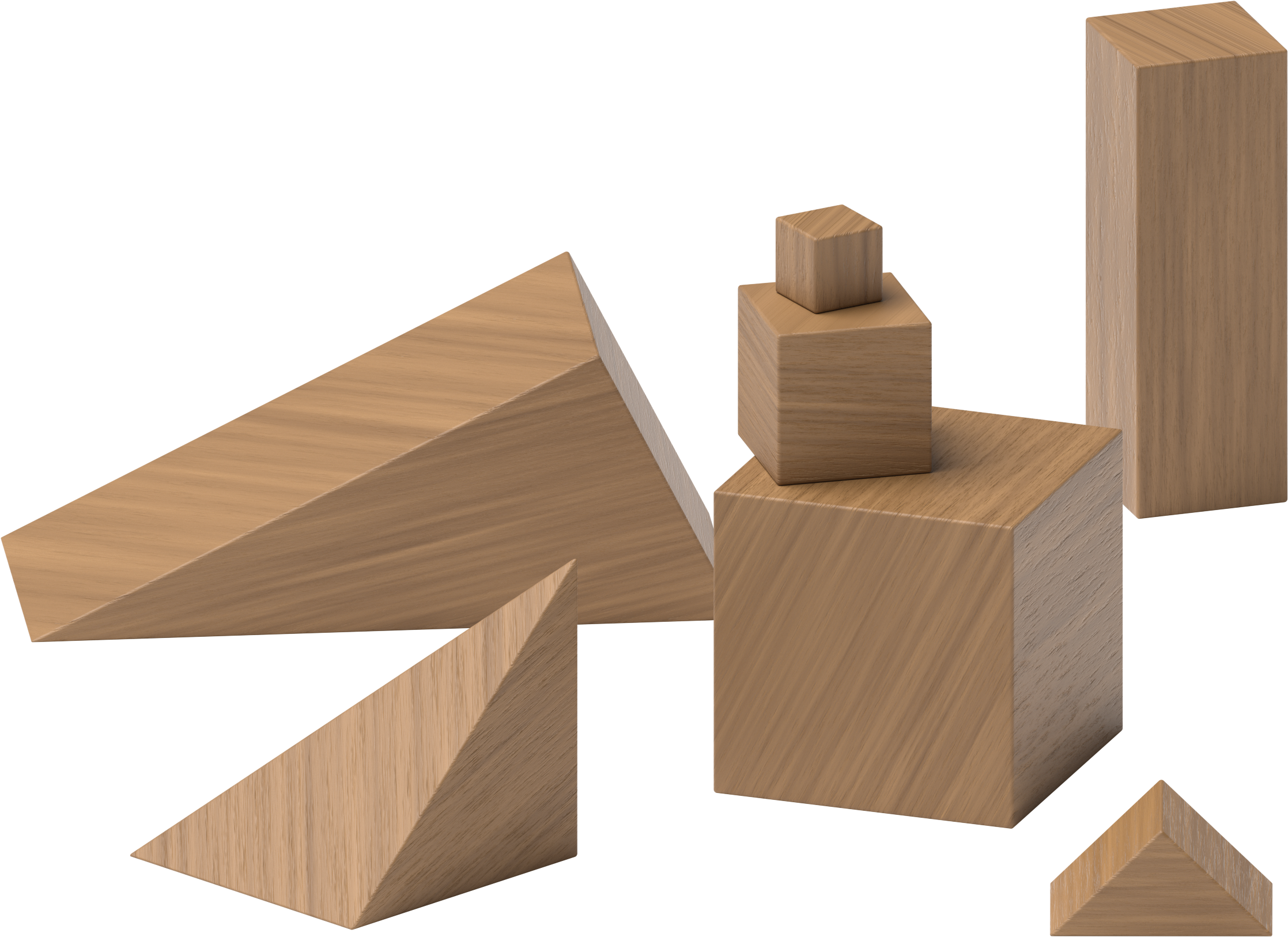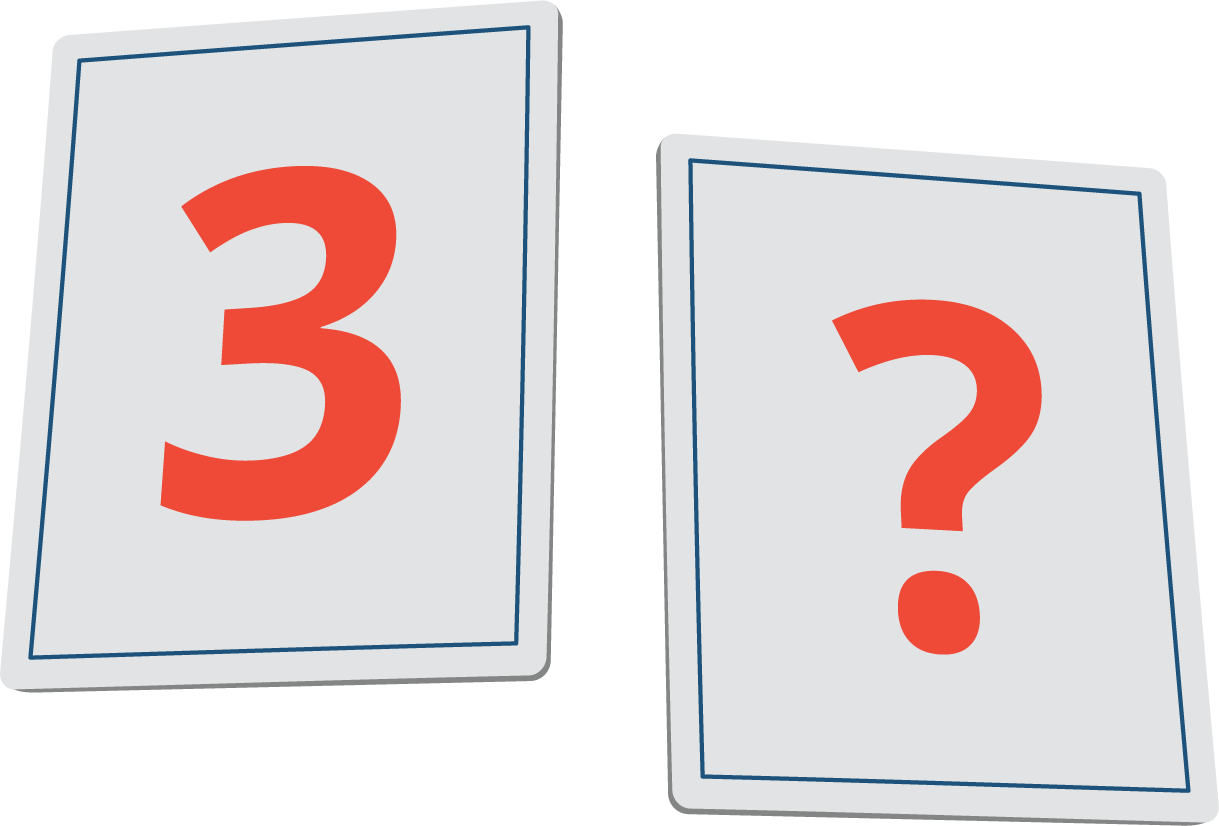Lesson 3
Questions and Stories About Shapes
Warm-up: Notice and Wonder: Mai’s Shape (10 minutes)
Narrative
The purpose of this warm-up is to elicit the mathematical questions that students produce about shapes composed of pattern blocks, which will be useful when students create and ask questions about shapes in a later activity. While students may notice and wonder many things about the shape, the questions that students can answer about the image are the important discussion points. As students discuss and justify their questions and answers, they share a mathematical claim and the thinking behind it (MP3).
Launch
- Groups of 2
- Display the image.
- “What do you notice? What do you wonder?”
- 1 minute: quiet think time
Activity
- “Discuss your thinking with your partner.”
- 1 minute: partner discussion
- Share and record responses.
Student Facing
Mai used pattern blocks to make this shape.
What do you notice?
What do you wonder?

Student Response
For access, consult one of our IM Certified Partners.
Activity Synthesis
- Reread each of the questions that students shared.
- As you read each question, ask: “Can we figure out the answer to this question? How?” (We can figure out how many blue rhombuses she used by counting. We would have to ask Mai why she didn’t use any square pattern blocks.)
Activity 1: Ask Math Questions About Shapes (15 minutes)
Narrative
The purpose of this activity is for students to develop math questions about shapes created from pattern blocks. Arrange students around the room so that students can easily circulate to see each other’s shapes. Consider expanding the gallery walk into a larger activity. Invite other students, teachers, or family members to participate and ask students questions about their shapes.
When students ask mathematical questions and recognize the mathematical features of the shapes and the pattern blocks they are made of, they model with mathematics (MP4).
Advances: Representing, Conversing
Required Materials
Materials to Gather
Launch
- Give students access to pattern blocks.
- “Put together pattern blocks to make a shape.”
- 2 minutes: independent work time
- “Walk around and look at the shapes that everyone created. Think of at least one question that you can ask about each shape that you see. Write down at least one question that you want to share with the class. You can draw a picture or write words and numbers to help you remember the question.”
Activity
- Invite half the class to stand next to their shape while the other half of the class walks around and looks at the shapes.
- 5 minutes: gallery walk
- Switch groups.
- 5 minutes: gallery walk
Student Facing
Student Response
For access, consult one of our IM Certified Partners.
Activity Synthesis
- Choose one student-created shape to display.
- “What questions did you think of to ask about _______’s shape?”
- Share and record responses.
- If not mentioned in the discussion, ask “What questions can we ask about _____’s shape that use ‘more’ or ‘fewer’?” (Did she use more triangles or more hexagons to make the shape? Which pattern blocks did she use fewer of?)
- Share and record responses.
- “Think of a story that you can tell about _____’s shape. Think of a question that you can ask at the end of the story.”
- Share responses.
- “In the next activity, you will make and tell stories about your own shape.”
Activity 2: Tell Math Stories About Shapes (15 minutes)
Narrative
The purpose of this activity is for students to develop and solve story problems about shapes made from pattern blocks. Students will likely gravitate toward Put Together, Total Unknown or Add To, Result Unknown story problems. The purpose of the activity synthesis is to highlight Take From, Result Unknown story problems. When students solve the story problems they reason abstractly and quantitatively.
Supports accessibility for: Organization, Memory, Attention
Required Materials
Materials to Gather
Launch
- Groups of 2
- Give students access to pattern blocks and connecting cubes or two-color counters.
- “Put together pattern blocks to make a shape. Use 2 different kinds of pattern blocks.”
- 3 minutes: independent work time
Activity
- “Think of a story problem that you could tell your partner about your shape. Remember to think of a question to go at the end.”
- 2 minutes: quiet think time
- “Share the shape you created and the story problem with your partner. Solve the story problem that your partner shares. Show your thinking using objects, drawings, numbers, or words.”
- 5 minutes: partner work time
Student Response
For access, consult one of our IM Certified Partners.
Activity Synthesis
- Choose 1 student-created shape to display.
- “Think of a story that you can tell about ______’s shape. Remember to think of a question to go at the end of the story.”
- Share and record responses.
- If not mentioned in the discussion, ask “What kind of story could I tell about _____’s shape that uses subtraction, or taking away?” (____ made a shape with 8 pattern blocks. Then her little sister took 2 of the pattern blocks away.)
Activity 3: Introduce Pattern Blocks, Build and Draw (15 minutes)
Narrative
The purpose of this activity is for students to learn stage 7 of the Pattern Blocks center. Students count out a given number of objects as they put together pattern blocks to make a new shape. Students also practice drawing shapes. A blank template is included at the end of the blackline master so that additional numbers can be written in.
After they participate in the center, students choose from any stage of previously introduced centers.
- Geoblocks
- Grab and Count
- Find the Pair
Required Materials
Materials to Gather
Materials to Copy
- Pattern Blocks Stage 7 Recording Sheet
Required Preparation
- Gather materials from:
- Geoblocks, Stages 1 and 2
- Grab and Count, Stage 1
- Find the Pair, Stages 1 and 2
Launch
- Groups of 2
- Give each student a recording sheet and pattern blocks.
- “We are going to learn a new way to do the Pattern Blocks center. It is called Pattern Blocks, Build and Draw.”
- Display the blackline master.
- “Each page tells you how many pattern blocks you need to use. This page says 'Put together 15 pattern blocks to make a shape.' Make a shape with 15 pattern blocks and then share it with your partner. Once you’ve checked to make sure your partner used 15 pattern blocks, draw or trace your partner’s shape.”
Activity
- 5 minutes: center work time
- “Now you can choose another center. You can also continue playing Pattern Blocks.”
- Display the center choices in the student book.
- Invite students to work at the center of their choice.
- 7 minutes: center work time
Student Facing
Choose a center.
Pattern Blocks

Geoblocks

Grab and Count

Find the Pair

Activity Synthesis
- “Which pattern blocks did you find the most challenging to draw? Why do you think they were the most challenging?”
Lesson Synthesis
Lesson Synthesis
“Today we asked math questions and told story problems about shapes made from pattern blocks.”
Write the story problem:
“Andre used 4 square pattern blocks to make a car.
Then he put 2 hexagon pattern blocks on the car to make the wheels.”
“What question can Lin ask at the end of the story?” (How many pattern blocks did he use to make the car and the wheels? How many more squares did he use than hexagons?)
Write \(4 + 2 = 6\).
“Andre used 4 square pattern blocks and 2 hexagon pattern blocks to make a car. He used 6 pattern blocks. We can write \(4 + 2 = 6\) to show what happened in the story. We can read it as 4 plus 2 is 6 or 4 plus 2 equals 6.”
Cool-down: Unit 7, Section A Checkpoint (0 minutes)
Cool-Down
For access, consult one of our IM Certified Partners.